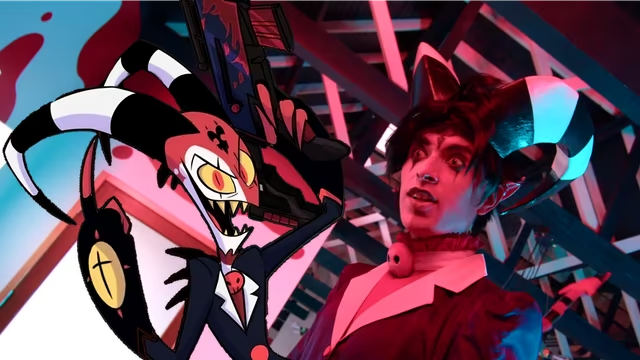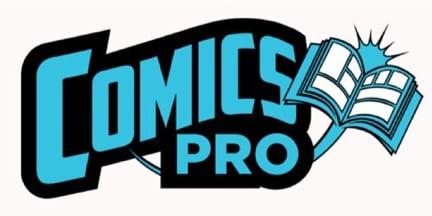If you click on a link and make a purchase we may receive a small commission. Read our editorial policy.
Remembering the divisive and revolutionary Secret Wars creator (and former Marvel Comics' EiC) Jim Shooter following his death at age 73
How a comics writing child prodigy named Jim Shooter came to be Marvel Comics' boss, created Secret Wars, and wasn't afraid of making enemies to do it.

Popverse's top stories
- If Critical Role's Legend of Vox Machina is The Hobbit, says Marisha Ray, then Mighty Nein is Lord of the Rings
- Watch now: Marvel writer Ben Percy shows off the Wolverine claws he always keeps "within arm's reach" [Popversations]
- For Popverse members only: Watch Prime Video's official Invincible panel from NYCC 2025, with Steven Yeun, Gillian Jacobs, Robert Kirkman, and Lee Pace
Jim Shooter — a comic book writer, editor, and publisher who led Marvel Comics through a creative renaissance in the '80s and co-created the original Secret Wars concept now being used as a basis for an upcoming Avengers movie — has died of cancer, aged 73.

The controversial figure, whose creative edicts during his time as Marvel editor-in-chief have been cited by some contemporaneous creators as driving them from the company, actually got his start at competitor DC in the mid-1960s, writing Superman, Supergirl, and Superboy and the Legion of Super-Heroes stories at the age of 14; in a 2010 interview, he talked about doing so as “working my way through high school to help keep my family alive.” From there, he moved to Marvel as an editor in 1969 at the age of 18, before leaving the position (and New York City) within three weeks to return to his family.
After working in advertising for a few years, Shooter returned to Marvel in 1976 as an assistant editor and writer, only to quickly move up the ranks; by January 1, 1978, he was the editor-in-chief of the entire company, a position he’d hold for the next nine years. Under his leadership, Marvel published runs that to this day are held up by fans as high-water marks for the company: Chris Claremont and John Byrne’s Uncanny X-Men collaboration, Byrne’s Fantastic Four, Frank Miller’s reinvention of Daredevil, Walt Simonson’s similar reinterpretation of Thor, and writer Roger Stern’s fan-favorite work on Amazing Spider-Man and Avengers, all of which has fueled movies and TV adaptations in recent years. Shooter was also in charge of Marvel for the emergence of its early graphic novel program and the Epic imprint, which saw creators able to control the copyright of new creations, and create stories aimed at older readers. The Marvel of Shooter’s era was one that undoubtedly pushed the company forward in new directions that laid groundwork for stories and innovations even today.
That said, Shooter was also infamously demanding as an editorial presence, with a strict set of rules that had to be followed no matter what. John Byrne, one of the superstar creators who left the company citing Shooter’s interference, once opined, “Shooter came along just when Marvel needed him – but he stayed too long. Having fixed just about everything that was wrong, he could not stop ‘fixing’... [He] had put Marvel into a place where all that was needed was a kindly father figure at the helm – and that was not Shooter!” One-time Marvel art director John Romita Snr. said in a 2007 interview, “Shooter had been great for the first two or three years… Then his Secret Wars was a big hit, and after that he decided he knew everything and he started changing everybody's stuff.”
Amongst Shooter’s rules was what has since been described as a ban on gay characters appearing in Marvel Comics, a rule put in place after Shooter himself wrote the first two gay characters in the Marvel Universe — two men who attempted to rape the Hulk’s alter ego, Bruce Banner, in 1980’s Hulk Magazine #23.

If the success of 1984’s Marvel Super-Heroes: Secret Wars — a toy tie-in comic written by Shooter that teamed all of the publisher’s big names together — fueled his ego (as seen by the self-consciously 'epic' nature of its follow-up, 1985's Secret Wars II, in which the meaning of life is a recurring theme), the failure of 1986’s New Universe project proved to be the final nail in Shooter’s coffin at the publisher. A new imprint featuring a second more grounded shared universe of characters led by Shooter and John Romita Jr.’s Star Brand, the failure of the New Universe provided executives the excuse to oust Shooter from the company after years of disputes and creator complaints.
What followed were a number of comebacks as Shooter started a slew of new publishers with diminishing returns: he created Valiant Comics in 1989, only to be fired in 1992; he then started Defiant Comics in 1993, with folded the following year; in 1995, he teamed with SNL production company Broadway Video to launch Broadway Comics, but that line only lasted a year before it was purchased by Golden Books and went bankrupt.
For a figure who had such a meteoric rise (and public downfall), Jim Shooter understandably didn’t stay away from comics for too long: he would return to DC for a Legion of Super-Heroes run in the early 2000s, and later to Valiant Comics (then Valiant Entertainment) a year later. He’d also write new versions of former Valiant characters Turok, Magnus Robot Fighter, and Dr. Solar for Dark Horse Comics, starting in 2010.
Although in poor health in recent years, Shooter was nonetheless a regular presence at comic conventions — he was at New York Comic Con in 2024 — and saw his reputation grow as fans saw past the (admittedly, many) negatives from his career and appreciated the positives. Jim Shooter was a complicated figure and certainly a flawed one, but there’s also something inspirational about just how irrepressible he proved to be, and his endless desire to return to the medium he loved in the face of numerous setbacks.
For those who want to celebrate his work, there are far worse places to start than his Avengers: Korvac Saga storyline.
Follow Popverse for upcoming event coverage and news
Find out how we conduct our review by reading our review policy
Let Popverse be your tour guide through the wilderness of pop culture
Sign in and let us help you find your new favorite thing.
















Comments
Want to join the discussion? Please activate your account first.
Visit Reedpop ID if you need to resend the confirmation email.